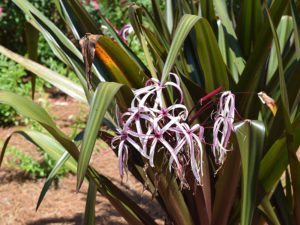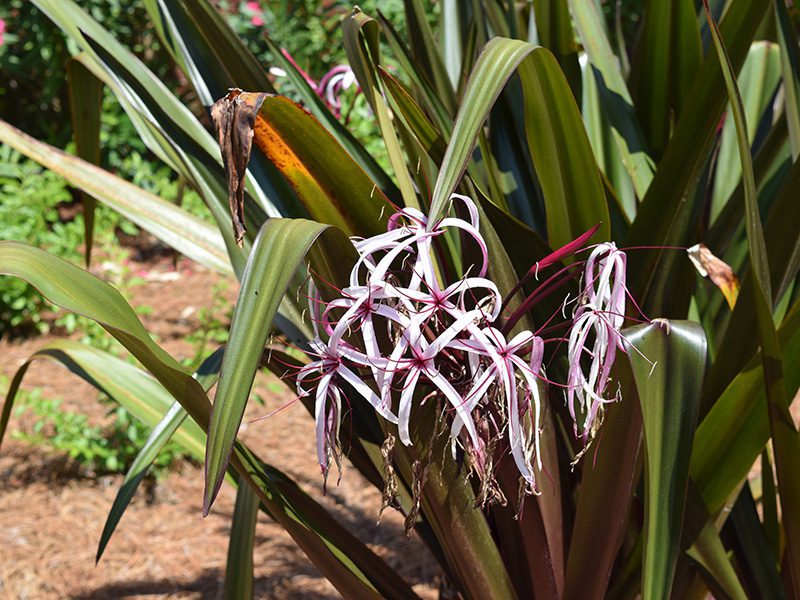 Want to show off a plant or design a garden space? There are tools to help you. Once you know the principles of design you can bend (or break) the rules. Some designers are able to visualize the finished project, because they rely on experience, techniques, and understand composition. When you practice doing something, hopefully your skills improve. (Even a professional design can look great on paper, but may miss your aesthethic mark when it is implemented.)
Want to show off a plant or design a garden space? There are tools to help you. Once you know the principles of design you can bend (or break) the rules. Some designers are able to visualize the finished project, because they rely on experience, techniques, and understand composition. When you practice doing something, hopefully your skills improve. (Even a professional design can look great on paper, but may miss your aesthethic mark when it is implemented.)
Begin with the first step – whether it is a small garden or large landscaping project – and identify the boundaries. If it is a whole property, you need a plat. Make several copies of the plat. You also need to find out if there are county or municipal ordinances, covenants, neighborhood restrictions and review before taking on a large project. Locate on a copy of your plat any buildings, trees, shrubs, beds, driveways, underground and overhead utilities-always call before you dig. You will also want to draw in existing hardscape-driveways, paths, decks, patio, or sidewalks. Did I say to use a pencil? There are also some inexpensive garden design software applications for the more technically inclined. The plan should include an arrow indicating North, and a key to identify water meter and hose bibs, locations of doors and windows indicating their height and width. If you are drawing to a scale that would also be included in the key. Think about your views – from the inside of the house, from the street or neighbor’s yards. Gee, we haven’t even looked at what plants to include. That comes after the site plan.
Doing a proper site plan gives the designer limitations and opportunities for plant selection. Landscaping can improve the property value, and can achieve other goals: aesthetic appeal, edible landscape, attracting wildlife, shading, and places to entertain or play. Be realistic about not only your wishes but how much maintenance do you want to do, or are you going to pay to have it maintained? What is your budget? You might want to move that to an earlier priority.
Skipping to the creative elements of design with the site plan in hand, and using tracing paper over the site plan, you have an idea of the space to cover with plants, mulch, hardscape, and other features. There are many right ways to landscape, but it takes an artist to make a good composition.
Imitation: Visit public and private gardens and note what appeals to you. What is the architecture of your house and what natural or architectural elements in the neighborhood do you want to copy? Note the whole picture, not just individual plants.
Theme: Is your intention to have a low maintenance informal lowcountry landscape? Other themes could be formal, edible, folky, meditation, tropical or Japanese. Accomplishing one or several themes can be done by using similar paving, mulches, colors, and groups of plants. Line and color and are used to appeal to the senses. Formal gardens are drawn with straight lines and right angles with balanced plantings and garden features, repetition of paving and geometric lawn patterns. Informal landscaping will avoid rulers and use curves, sweeps, drifts and lots of natural mulches, swings, and benches.
Plant Selection: Choose at least 70% native plants and 30% non-invasive exotics. There are native plants to fit any niche or bed in your landscape. Remember – Right Plant Right Place. The native plants which evolved in these hot, humid and poor soils of the lowcountry shouldn’t require fertilizers or extra water when they are established. The first consideration in plant selection should be the natural form of the plant. This reduces the need for pruning and thinning. Not only are there native varieties in small, medium and large, they also come in rounded, vase, weeping, and upright forms. Color is an important tool to express beauty, harmony, and the rhythm of a landscape. Shades and hues of a color compliment and contrast to give a sense of unity. The possibilities of combinations of leaves, fruits, flowers, and bark color afford the viewer seasonal interest. Texture, leaf shape and size can add variety to a garden design and again the choices are staggering. Focal points that demand attention and make a dramatic statement could be unusual trees or shrubs, a sculpture, driftwood, or a planted container. Want to show off a plant? Put it on a pedestal.
Crafting a well-designed landscape is all about good composition. Choose plants and outdoor furnishings that complement each other. Framing landscape views with vertical and horizontal elements is another way to accomplish your composition or use a wall or fence as a vertical backdrop. You get to create your own illusion.









